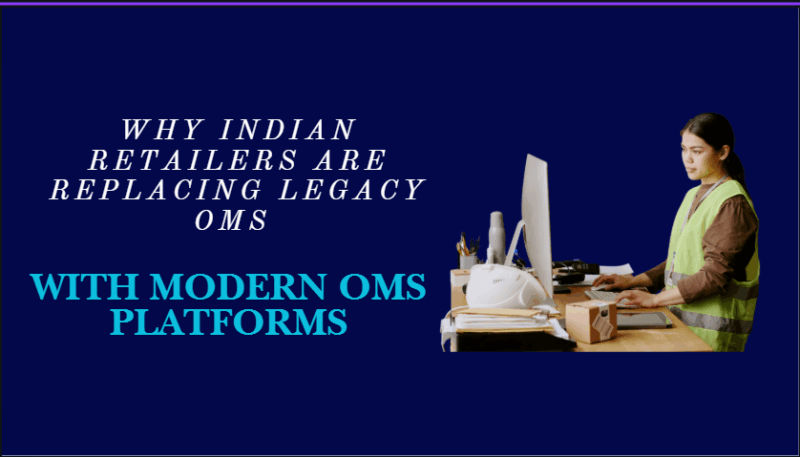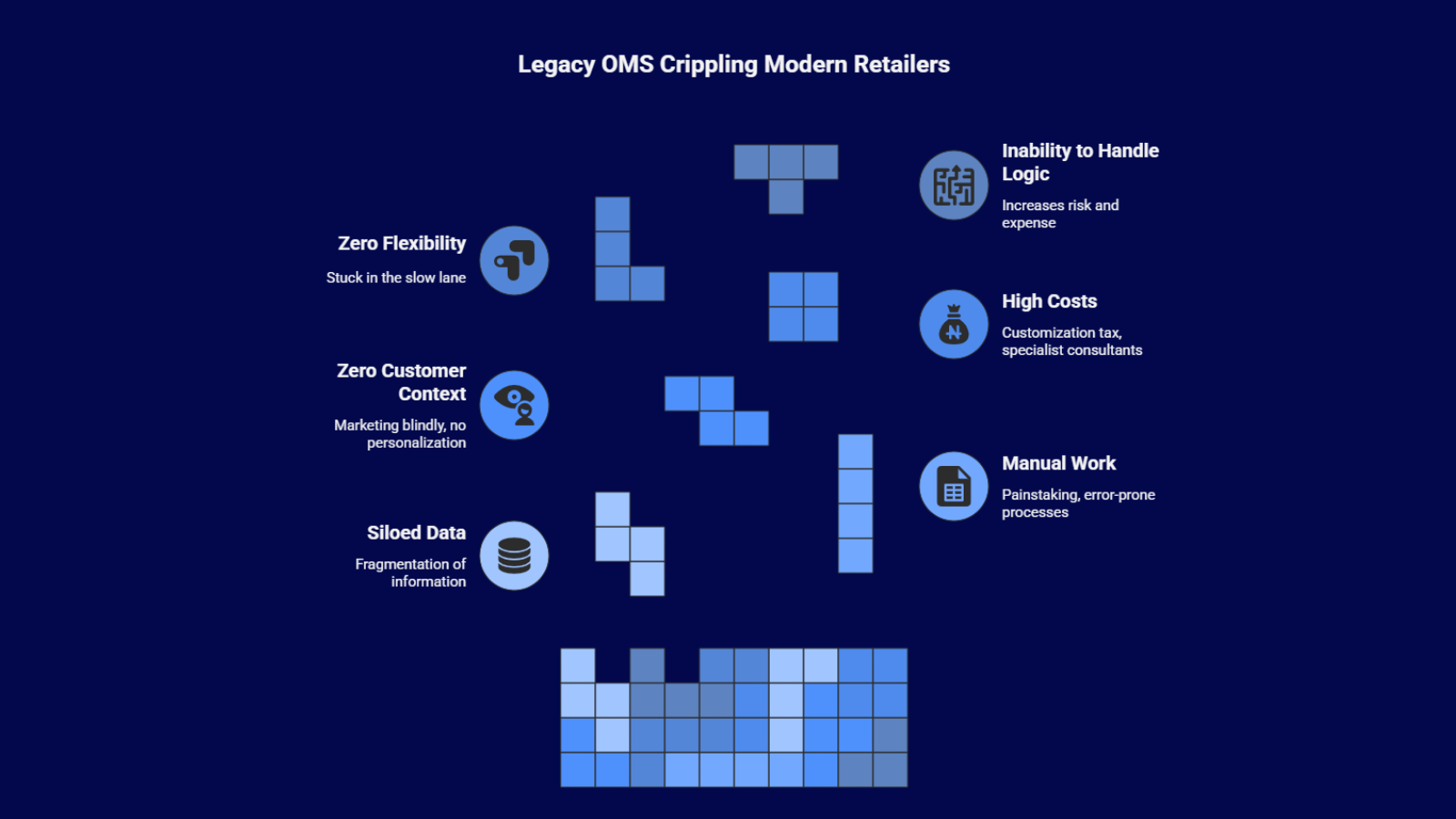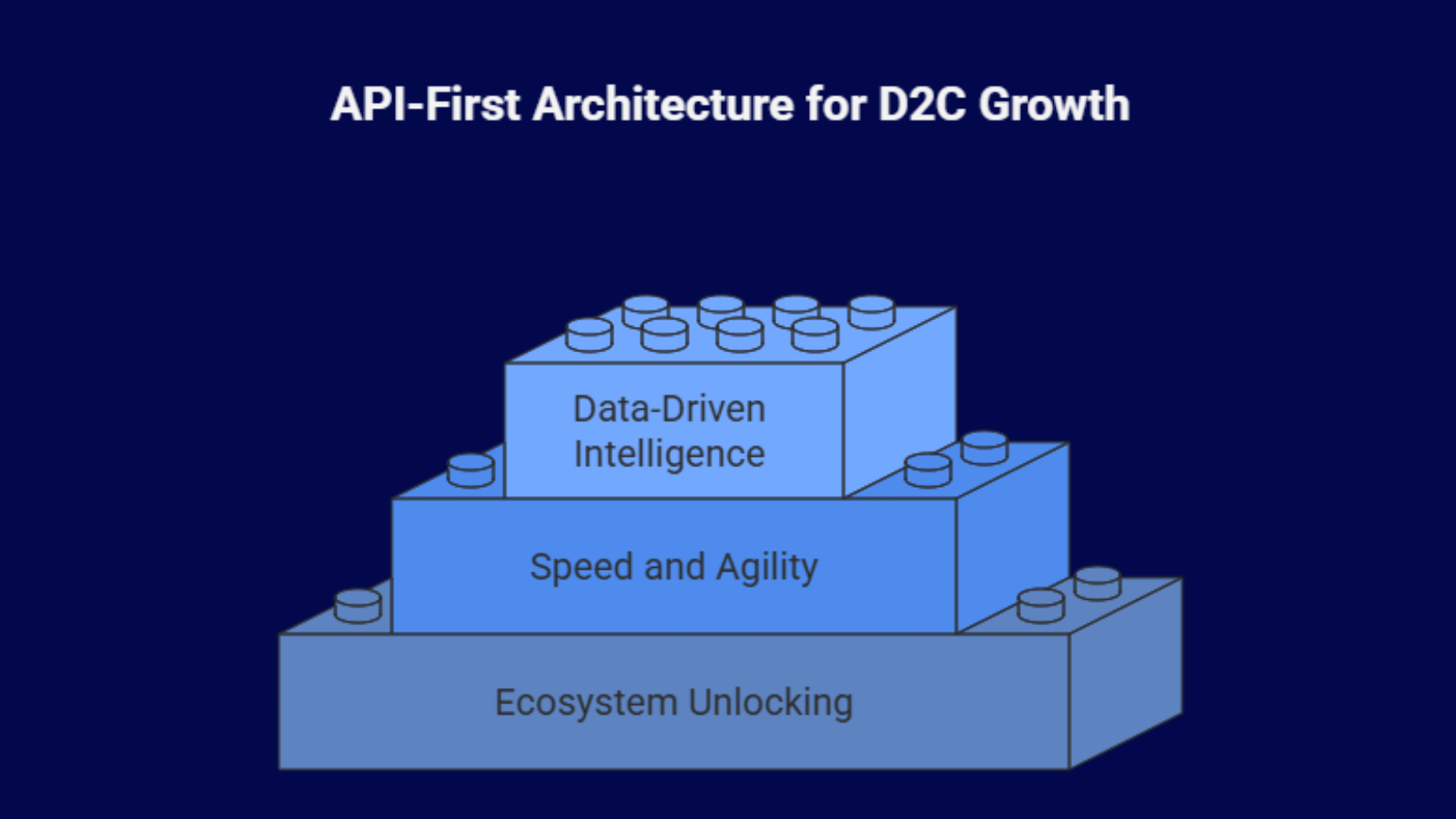
For years, many established Indian retail brands, and even those who jumped into e-commerce early, relied on outdated, often clumsy systems to manage their orders. Think customised spreadsheets, clunky on-premise software, or basic modules bolted onto an old ERP. We call these legacy OMS tools. They were fine when retail was a linear supplier to warehouse to store shelf.
But the Indian consumer has moved on. They now shop across Instagram, Amazon, the brand’s website, and physical stores, expecting everything to be instant and seamless. This new, complex reality of the omnichannel world has brutally exposed the flaws of those old systems. They’re slow, they’re expensive to maintain, and they can’t talk to each other.
The result is a forced, urgent migration: Indian retailers are rapidly ditching their relics for modern, cloud-native Order Management System (OMS) platforms. This isn’t just a technical upgrade; it’s the defining strategic pivot that separates the brands set to dominate the next decade from those clinging to the past.
The key to survival isn’t just being online; it’s being orchestrated. Let’s unpack why these legacy systems are failing, and how the new platforms are fixing retail’s most painful problems.
Why Are the Old Order Management Systems Crippling Modern Retailers?
The core problem with legacy OMS platforms is that they were designed for an offline world and then crudely patched for online sales. This fundamental mismatch creates operational bottlenecks that bleed profits and erode customer trust.
A. The Pain of Siloed Data and Manual Work
The most damaging legacy flaw is the fragmentation of information.
- Inventory Blind Spots: Your stock is everywhere in the warehouse, on the store floor, in a 3PL facility. A legacy tool can’t see it all at once. It treats each location as a separate silo. This inevitably leads to two costly scenarios: overselling (selling an item online that was just bought in a store) or worse, having unsold stock sitting idle in a warehouse while your website shows a popular item as “out of stock.” It’s a tragic waste of capital.
- The Reconciliation Nightmare: When you have five different sales channels (your site, Flipkart, Amazon, social, and physical stores), orders and payments flow through five different pipes. Reconciling sales, returns, and taxes (especially for GST compliance) becomes a painstaking, manual process often done in massive, error-prone spreadsheets. It slows down financial closure and makes audits a headache.
- Zero Customer Context: Your legacy system knows a customer bought something, but it doesn’t know where they browsed, whether they returned the previous size, or what they viewed on your app. Without a unified customer history, you can’t personalize anything you’re marketing blindly.
B. The Financial Trap: High Costs and Zero Flexibility
Legacy systems may feel familiar, but they are a massive financial liability disguised as stability.
- The Customization Tax: Every time you need a new feature, want to integrate a new payment method, or crucially have to comply with a new regulation like the latest GST e-invoicing mandate, it costs a fortune. These on-premise tools require specialist consultants and months of downtime for a simple patch.
- Stuck in the Slow Lane: When a hot new channel like quick commerce or a regional social marketplace emerges, legacy systems simply can’t plug in easily. Retailers are forced to miss out on new revenue streams because their technology is too rigid and slow to adapt.
- Inability to Handle Complex Logic: Today’s fulfillment needs speed and intelligence. Legacy tools can’t handle sophisticated decisions like checking a Cash on Delivery (COD) order’s RTO (Return-to-Origin) risk based on a customer’s address history before dispatching. They treat every order the same, which increases risk and expense.

How Are Modern OMS Platforms Fixing India’s E-Commerce Challenges?
Modern OMS is built on a simple philosophy: all data must be unified, real-time, and accessible via open APIs. These cloud-native solutions act as the central brain of the retail ecosystem, orchestrating orders across every channel intelligently.
A. Real-Time Intelligence and Financial Protection
A modern OMS provides the financial and operational rigor needed to scale aggressively without losing control.
| Modern OMS Feature | Operational Impact for Indian Retailers | Why the Legacy Tool Fails |
|---|---|---|
| Unified Inventory Sync (U-Sync) | Provides a single, instantaneous view of stock across all locations (warehouse, store, 3PL). | Inventory is managed in silos; it requires manual updates between systems. |
| Intelligent Order Routing (IOR) | Instantly chooses the best fulfillment point based on customer proximity, shipping cost, and real-time carrier performance. | Routes orders based on simple, rigid rules, often resulting in slower, costlier fulfillment. |
| COD Risk Management | Automated verification protocols (SMS/IVR) trigger high-risk COD orders before shipping. | Cannot integrate automated pre-dispatch checks, leading to high RTO rates and margin loss. |
| GST E-Invoicing Automation | Automatically generates, sends, and records compliant e-invoices for every transaction and return. | Requires manual data pull and uploading to external compliance software, risking errors and delays. |
B. Built for the Omnichannel Consumer
Today’s consumer doesn’t care if you bought a product on your app or picked it up in your store they care that the experience was smooth. Modern OMS platforms are the bridge between the digital and physical worlds.

- Ship-from-Store (SFS) / Click-and-Collect (BOPIS): The OMS sees your physical store inventory as a live asset. It allows you to transform your retail locations into micro-fulfillment centres. If a customer orders online and the main warehouse is too far, the OMS routes the order to the nearest store to be shipped or picked up. This leverages your existing real estate to offer lightning-fast urban delivery.
- Seamless Cross-Channel Returns: If a customer buys on Amazon but returns the item to your physical store, the OMS is the only thing that can instantly log the return, update the Amazon reconciliation log, and issue the refund. This frictionless process builds immense trust and loyalty.
- Fast Integration to New Channels: When a new regional marketplace or social commerce app gains traction, a modern OMS plugs in rapidly via open APIs. This means a retailer can participate in new, high-growth channels in days, not months, ensuring they never miss a trend.
Why is API-First Architecture Crucial for Long-Term D2C Growth?
The technology you choose now must not just solve today’s problems; it must be ready for tomorrow’s unknown challenges. The API-first design of modern OMS is the key to achieving this future-proof flexibility.
A. Unlocking the Ecosystem
APIs (Application Programming Interfaces) are essentially digital translators that allow different software systems to talk to each other without manual intervention.
- Best-in-Class Stacks: Instead of buying one massive, mediocre system for everything, an API-first OMS lets you hand-pick the best tools in every category: the best WMS for your warehouse, the best AI tool for demand forecasting, the best carrier aggregator for logistics, and the best CRM for customer service. The OMS serves as the hub, connecting them all seamlessly.
- Speed and Agility: When a new payment gateway, courier service, or government regulation emerges, the necessary integration is a matter of updating an API connector, not rebuilding entire software modules. This inherent agility is what allows D2C brands to move faster than their legacy-bound competitors.
B. Driving Intelligence with Data
With all order, inventory, and customer data flowing through a single OMS, retailers gain the comprehensive input needed for advanced analytics.
- Actionable Reporting: Instead of generating fragmented reports from five different systems, the OMS provides a single dashboard showing profit and loss filtered by channel, region, or even individual product variants. This clarity allows for data-driven strategic decisions, like cutting ad spend on a high-CAC channel or boosting inventory on a high-margin D2C channel.
- AI Integration: This centralized data feed is what fuels AI. It enables predictive models to accurately forecast demand for specific SKUs in specific Indian cities, ensuring inventory is pre-positioned correctly. This preemptive planning is a major margin booster.

What Are the Hidden Dangers of Staying with Legacy Order Systems?
The decision to delay migration isn’t saving money; it’s accumulating significant risk. For Indian retailers in particular, the cost of inaction is rapidly outpacing the cost of investment.
The Silent Killer: Margin Erosion
Every manual step in the legacy process costs money. Each over-sold item leads to customer cancellations and refund processing fees. Every complex, un-verified COD order that becomes an RTO is a triple cost (forward shipping, reverse shipping, and manpower to process the return). These constant frictional costs silently chip away at your profitability, making it impossible to compete with the efficiency of modern, automated brands.
Reputation Damage at Scale
In the digital age, fulfillment speed and accuracy are part of the product. A legacy system that causes delayed shipping or sends the wrong item is instantly penalized with poor online reviews and negative social media chatter. This reputation damage is sticky, highly visible, and costly to fix, driving potential customers straight to more reliable marketplace competitors.
The move to a modern OMS isn’t merely about efficiency; it’s about establishing the digital scaffolding necessary for sustainable, profitable, and customer-focused growth. It’s the essential investment that ensures your brand can not only survive but thrive in the dynamic, demanding landscape of Indian e-commerce.
Ready to transcend the limitations of legacy systems and power your growth with real-time, intelligent order orchestration?
Explore the future of retail management today at Base.com. Start your Modern OMS transformation.
Frequently Asked Questions (FAQs)
Q1. How does a modern OMS specifically help retailers with GST compliance for e-commerce returns?
A. A modern OMS automates the complexities of GST on returns. When a return is processed, the system automatically generates the necessary credit note and maintains a verifiable digital audit trail that links the original sale, the payment adjustment, and the inventory return. This automated reconciliation is vital for accurate tax filings and minimizing compliance risk.
Q2. Is a modern OMS essentially just a better version of an Enterprise Resource Planning (ERP) system?
A. Not exactly. The ERP is the system of record that handles financials, manufacturing, and core accounting. The OMS is the system of commerce execution that focuses entirely on the rapid, intelligent orchestration of orders, inventory, and fulfillment across multiple sales channels. They work best when the OMS handles the front-end agility and seamlessly pushes financial data to the ERP.
Q3. How quickly can an Indian retailer expect to see a Return on Investment (ROI) after implementing a new OMS?
A. Many retailers see a rapid ROI, often within 6 to 12 months, driven primarily by three factors: a significant drop in RTO rates (due to COD verification), the complete elimination of overselling penalties, and the immediate reduction in shipping costs (due to intelligent order routing). These savings are directly measurable and start accumulating on day one of going live.
Q4. What is the greatest risk of a retailer relying on a marketplace’s built-in order management tools?
A. The greatest risk is data dependency. The marketplace’s tools are optimized for the marketplace’s profit, not the retailer’s brand building. You lose control over crucial first-party customer data, fulfillment experience (like custom packaging), and pricing flexibility, making it extremely difficult to build the direct customer loyalty necessary for long-term, high-margin D2C growth.

